This knife is a workhorse.
It is solid and well designed and worth considering for a camp or utility knife that can do just about anything.
by Leon Pantenburg
Disclaimer: Knivesshipfree.com is a sponsor. I did not get a free knife for this review. Neither KSF nor Bark River Knives had any input in this review.
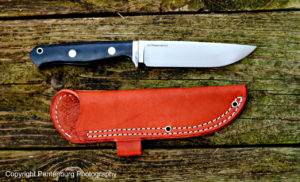
The proven design of this knife makes it a good choice for an all-around knife.
When the Model T Ford came out in 1908 it changed the way Americans live, work and travel. It was affordable, simple to repair and easy to drive. It became ubiquitous, and Model Ts were everywhere. It came in one color: black. As the novelty wore off, people took the car and its reliability for granted and it became no big deal. (See the video review below)
The Bark River Camp and Trail knife is kind of like that. The knife is not a newcomer and the Camp and Trail can be overlooked in the crush of new releases, designs and steels. But the original solid, useful design is as good as it was when it came out. If you’re looking for a solid, utilitarian knife that can handle just about everything, the Camp and Trail deserves a hard look.
Here are the specifications, courtesy of Knivesshipfree.com.
| Overall Length: | 9.775″ |
| Blade Length: | 5″ |
| Blade Steel: | A2 Tool Steel @ 58-60RC |
| Blade Thickness: | .190″ |
| Weight: | 5.5oz. |
| Price: | Starting at $209.97 |
The knife that I used for my review is available in my personal cache and for sale in my Gear Store.
MY REVIEW: THE GOOD STUFF
Handle: A user handle is generous, IMHO, and allows a secure, four-finger grip. This is what you need for a working knife, even if you don’t always use the hammer grip. There are no quality framing hammers, half hatchets or machete handles that don’t allow a solid, secure grip. The Camp and Trail handle diameter is large enough so your finger tips don’t touch your palm when grasping it. It is less likely to rotate in your hand, or slide. You can use this tool for an extended period of time without fatigue or developing hot spots.
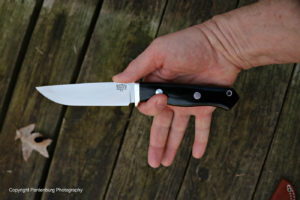
The generous handle offers safety and comfort to the user.
The handle is 4.77 inches long, which fits me well. Since I often use a hunting knife while wearing latex and/or cut resistant gloves, I want a good-sized handle. This one works.
A micarta handle is virtually indestructible, and the material is my choice for a user knife. Micarta gets tacky and “grippier” when it gets wet. This is a big deal when you’re field dressing a deer or cleaning fish.
Blade length: The five-inch blade is a good compromise between too long and too short. I personally prefer a four-to-five-inch blade on a hunting/survival knife, and a 2-1/2 to three inch blade for small game hunting and bushcrafting work. This blade is about right.
Grind: All Bark River Knives are convex ground. My experience is that convex is the best all-around grind because of its edge holding and strength. Once you learn the sharpening technique, maintaining the edge is a snap.
Steel: A2 is often overlooked in favor of other supersteels. That is a mistake. A2 is a tool steel used in chisels, planer blades and other woodworking implements because of its reasonable price, edge-holding ability and toughness. Plus, its easy to maintain an edge and sharpen as needed. Personally, I can’t tell a major difference in edge-holding between A2 and my other favorite CPM 3V. I am also OCD about maintaining edges, so I never let a knife get dull.
I have used several A2 BR hunting knives on deer and elk, and performance was outstanding. In one case, I completely gutted, skinned and dismembered a buck with my BR Sahara. Then, without sharpening it (I did clean it!) the Sahara was used to carve the Thanksgiving turkey.
If staining or rust is a concern, get a quality stainless steel. But none of my A2 steel knives have stains or Patina on them, because I wipe the blade after using it, and may polish the surface with Maas or Flitz metal polish.
Blade thickness: I like thin blades. For overall use, I don’t see any advantage in a blade that is over 1/8-inch thick. The Camp and Trail blade is thick enough to take hard use, but thin enough to be a pretty good slicer. Don’t get a Camp and Trail for filleting fish – the blade is too thick, inflexible and short. If the main task will be cleaning or filleting fish, get the BR Sportsman.
Blade point: Given a choice, I will generally go with a clip point and swedge. But a drop point is a very close second, and on some knives, such as my Ambush Tundra, I prefer a drop or spear point. For a camp knife that could be called upon to do everything from cleaning fish to processing tinder, the drop point is a good choice.
Blade belly: The belly is the curve from the point to where the blade straightens out. On a hunting knife, this is a part that does the work of skinning and gutting. The Camp and Trail belly has about the same curve as several other hunting knives I’ve used. It should skin well, but until deer season rolls around again, I won’t be able to field test that part.
Spine: The spine is ground at a 90-degree angle, like an ice skate. This provides a tool to scrape a ferro rod or shred tinder, and saves the sharpened edge.
Sheath: The knife comes with a sturdy leather sheath that offers protection to the edge and the user. It’s a very usable sheath. But this is a review, and I presume you’re looking for feedback. I would encourage BR to provide one of the excellent Vehement Knives leather sheaths designed by Jenna Martin with the knife.
Warranty: The Bark River “satisfaction guaranteed” warranty is bullet proof and really does work. I checked it out and here is what I found.
Made in the USA: All the Bark River craftspeople and support staff pay local, state and federal taxes, and contribute to their communities. The main BR distributors, Knivesshipfree.com and DLT Trading.com, are also American businesses who make the same contributions as taxpayers and community members. Buy American!
Do you need a Camp and Trail?
As always, it depends on what the knife might be used for. It would be fine for cleaning fish, but a fillet knife would be a better choice. It will work very well as a big game hunting knife, but the blade may be awkward for field dressing birds or small game.
So what you need to do is figure out what the knife will most likely be used for, under what conditions, and what the knife must absolutely be able to do. You’ll find that you need a minimum of three knives, and the Camp and Trail may be one of them.
In the final analysis, there is no such thing as a knife that can handle every outdoors task. But I would have no hesitation in packing this knife on my belt on a backcountry mountain hunt or a trek through a southern swamp. Like the Model T, it can do a lot of jobs well, it can be used for everything and you can depend on it.
Please click here to check out and subscribe to the SurvivalCommonSense.com YouTube channel – thanks!

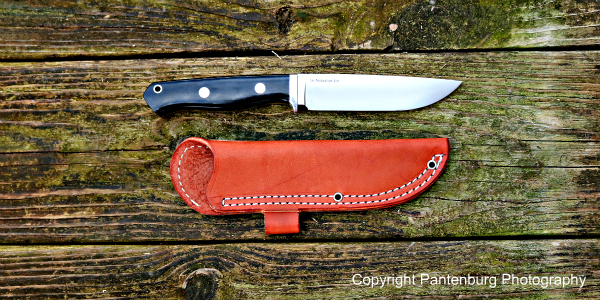
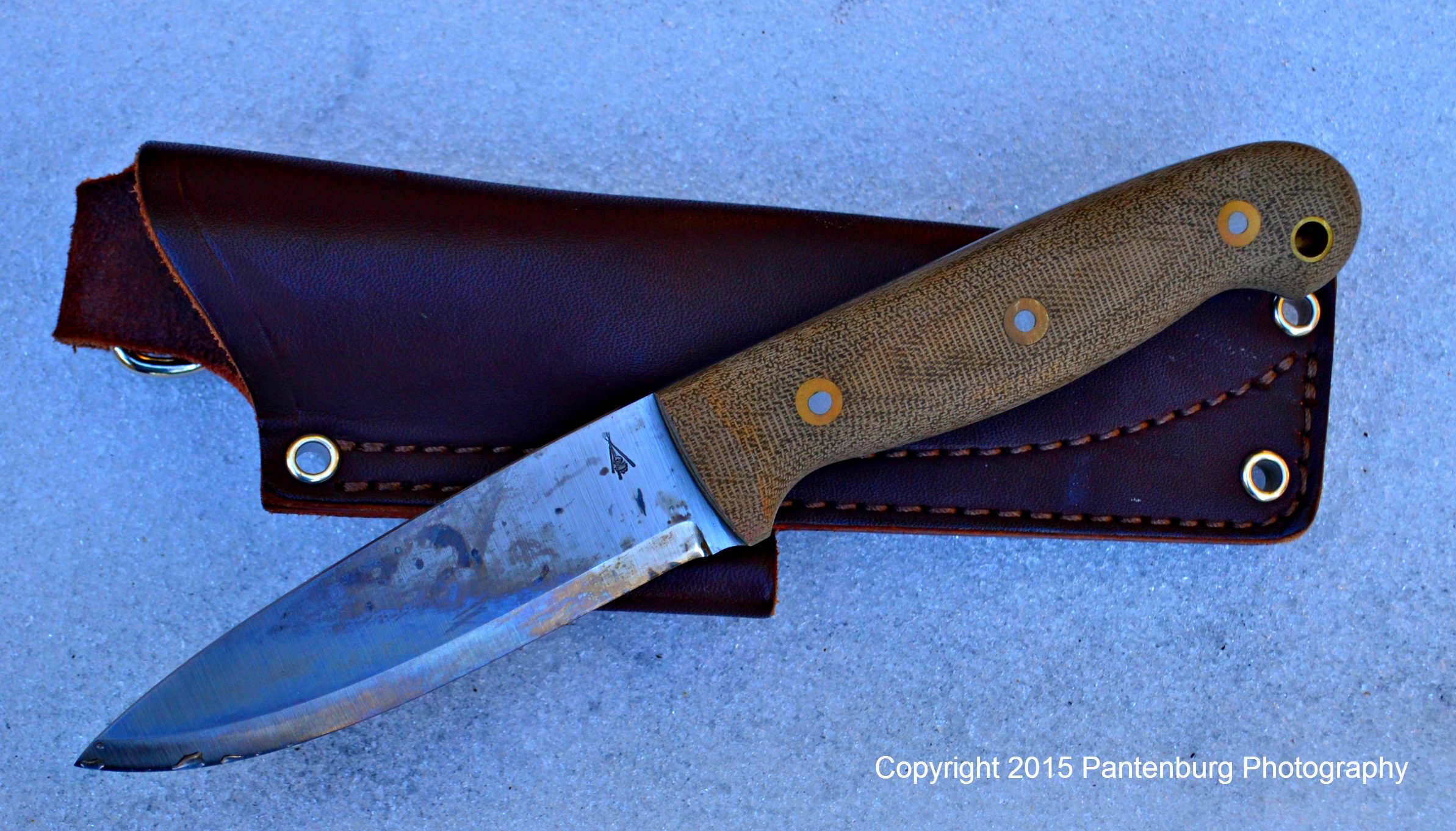
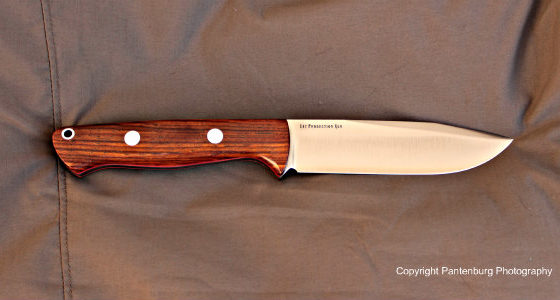
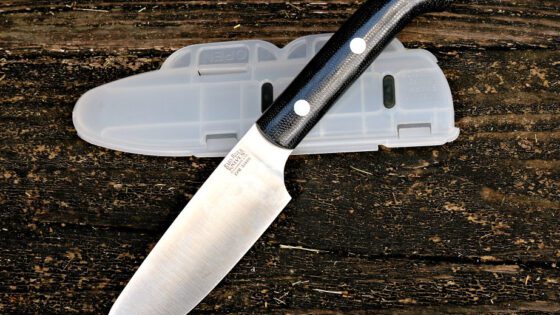
Leave a Reply